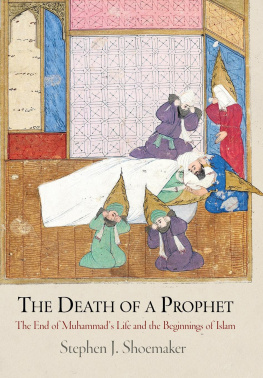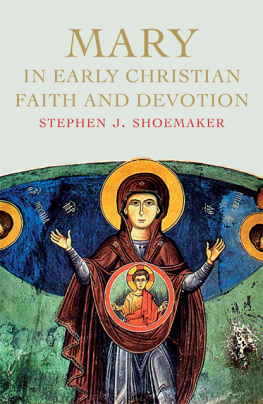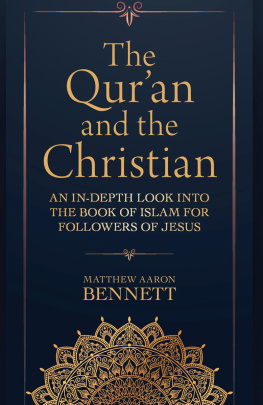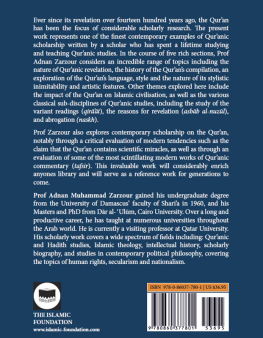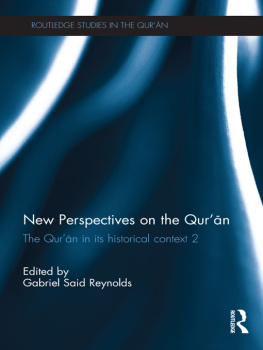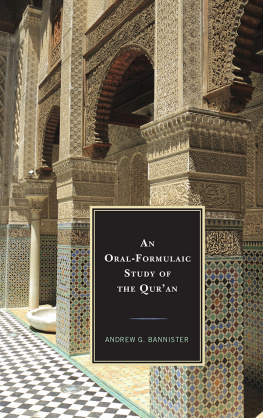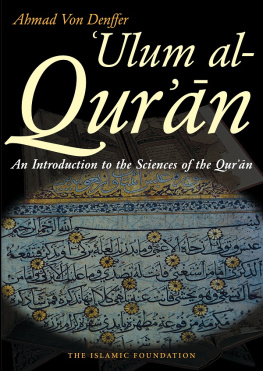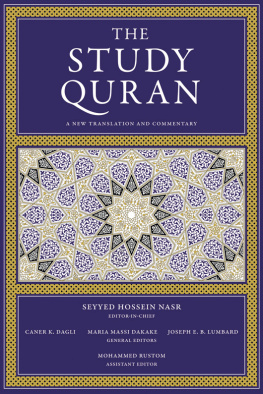Luminos is the Open Access monograph publishing program from UC Press. Luminos provides a framework for preserving and reinvigorating monograph publishing for the future and increases the reach and visibility of important scholarly work. Titles published in the UC Press Luminos model are published with the same high standards for selection, peer review, production, and marketing as those in our traditional program. www.luminosoa.org
The publisher gratefully acknowledges the support of the Open Access Article & Book Processing Charge Committee, the University of Oregon Libraries, and the University of Regensburg Centre for Advanced Studies Beyond Canon.
Open access edition of this title is funded by the National Endowment for the Humanities.
Creating the Quran
Creating the Quran
A Historical-Critical Study

Stephen J. Shoemaker

UNIVERSITY OF CALIFORNIA PRESS
University of California Press
Oakland, California
2022 by Stephen J. Shoemaker
This work is licensed under a Creative Commons [CC BY-NC-ND] license. To view a copy of the license, visit http://creativecommons.org/licenses .
Suggested citation: Shoemaker, S. J. Creating the Quran: A Historical-Critical Study . Oakland: University of California Press, 2022.
DOI: https://doi.org/10.1525/luminos.128
Names: Shoemaker, Stephen J., author.
Title: Creating the Quran : a historical-critical study / Stephen J. Shoemaker.
Description: Oakland, California : University of California Press, [2022] | Includes bibliographical references and index. ISBN 978 0-520000000 (cloth : alk. paper)
Identifiers: LCCN 2021060219 (print) | LCCN 2021060220 (ebook) | ISBN 9780520389038 (paperback) | ISBN 9780520389045 (ebook)
Subjects: LCSH: Quran History. | Qur an HistorySources. | Quran Criticism, interpretation, etc.HistorySources.
Classification: LCC BP131 .S56 2022 (print) | LCC BP131 (ebook) | DDC 297.1/2209 dc23/eng/20220129
LC record available at https://lccn.loc.gov/2021060219
LC ebook record available at https://lccn.loc.gov/2021060220
Manufactured in the United States of America
28 27 26 25 24 23 22
10 9 8 7 6 5 4 3 2 1
For the Loncoske sisters
CONTENTS
ACKNOWLEDGMENTS
The project that resulted in this book was originally conceived within the scope of my participation in the Center for Advanced Study Beyond the Canon, a collaborative research group at the University of Regensburg, funded by the Deutsche Forschungsgemeinde, and it marks my primary contribution to this ongoing Collaborative Research Group. I am enormously grateful for having been invited to participate in this research group as well as for the considerable intellectual and financial support that it provided for my research. My thanks especially to Tobias Nicklas, for initially inviting me to be a part of this project, and also to the two other directors, Harald Buchinger and Andreas Merkt. Likewise, I thank Stephanie Hallinger, the centers academic director, and also the centers research assistants, Charlotte von Schelling and Marko Jovanovic, for all of their help with my research and stays in Regensburg in 2019 and then in 202122. All have become close friends and valued collaborators in the process, contributing valuable ideas and perspectives to my research during the last several years on a number of topics. My stay in Regensburg was initially planned for 202021, but it was delayed a year owing to a number of factors, not the least of which was the global coronavirus pandemic. I am delighted now at last to be in Regensburg, where, fittingly, I completed and submitted the final manuscript for this book.
In as much as the particular focus of the Regensburg Center for Advanced Study is the contours of the Christian canon during late antiquity, there is perhaps some need for explanation of why a book on the canonization of the Quran is nonetheless an essential part of this broader, collaborative research trajectory. Initially, I had conceived of this book along somewhat different lines. It was my intention to write a book that would be titled Quran and Canon: The Contours of Scripture at the End of Antiquity. The plan was to investigate the Qurans emergence as a new scriptural tradition in the late ancient Near East from a novel perspective, understanding the Quran as a late ancient biblical apocryphon that eventually became the scripture of a new religious tradition. By approaching the Quran as a late ancient biblical apocryphon of uncertain origin, whose scriptural destiny was not yet determined, it would be possible to study the Quran as a witness to the diversity and creativity of religious culture in the late ancient Near East. When viewed from such a perspective, the Quran offers a fascinating example of how an emergent religious community approached both the boundaries and the riches of scriptural culture in late antiquity. The idea was to consider how the Quran recognizes and embraces the authority of these antecedent scriptural collections while simultaneously reconfiguring and supplementing their contents. From this perspective, the Quran can challenge and inspire us to rethink the boundaries of the scriptural canon in late antiquity, as well as conceptualizations of scripture that were in circulation at this time.
For better or worse, that is not the book I have written. Perhaps I will write it someday soon, and I think it is a worthy project, perhaps for others to pursue as well. Nevertheless, as I set out to write, I was hoping that I could deal with the thorny issues surrounding the date of the Quran, its transmission, composition, and canonization, in only a couple of chapters at the end of the study. Almost immediately, as soon as I began to set pixel to page, I realized that this would not work. The whole process of the Qurans production has been so underresearched from a critical perspective that there was simply no way to avoid beginning with this subject. Yet, as I began to write about this topic, it quickly became clear that it would take much more than just two chapters to set the terms for the historical-critical study of the Quran as part of the scriptural world of Near Eastern late antiquity. Indeed, it was not long before I realized that this was going to be the subject of the entire book, and it was going to be a long book at that. And so, rather than considering the Quran primarily as a witness to the rich world of late ancient apocryphicity, I have instead critically analyzed the process by which the Quran emerged from the scriptural surfeit of late antiquity, both canonical and noncanonical, to become the new canonical scripture of a new religion, Islam. It is a topic, I would venture to say without hesitation, which is essential for understanding the heterotopias of religious authority in late antiquity, as well as the production of scriptural traditions beyond the canon and the various canonical processes at work in this pivotal era.
I also owe significant gratitude to a number of other benefactors for their support of this project. Firstly, I would like to thank the Institute for Research in the Humanities at the University of WisconsinMadison for the support of a Robert M. Kingdon Fellowship, which, combined with a sabbatical, enabled me to focus on writing this book during 202021. Unfortunately, thanks to the coronavirus, I never made it to Madison, much to my disappointment. But I thank the institutes director and staff, Steven Nadler, Ann Harris, and Elizabeth Nealy, for their creativity and flexibility in making for a successful fellowship year despite a raging pandemic. I also thank the other scholars in residence in our unusual virtual community for the many insights I gained both from their own research presentations and their questions and comments regarding my own.
Next page

